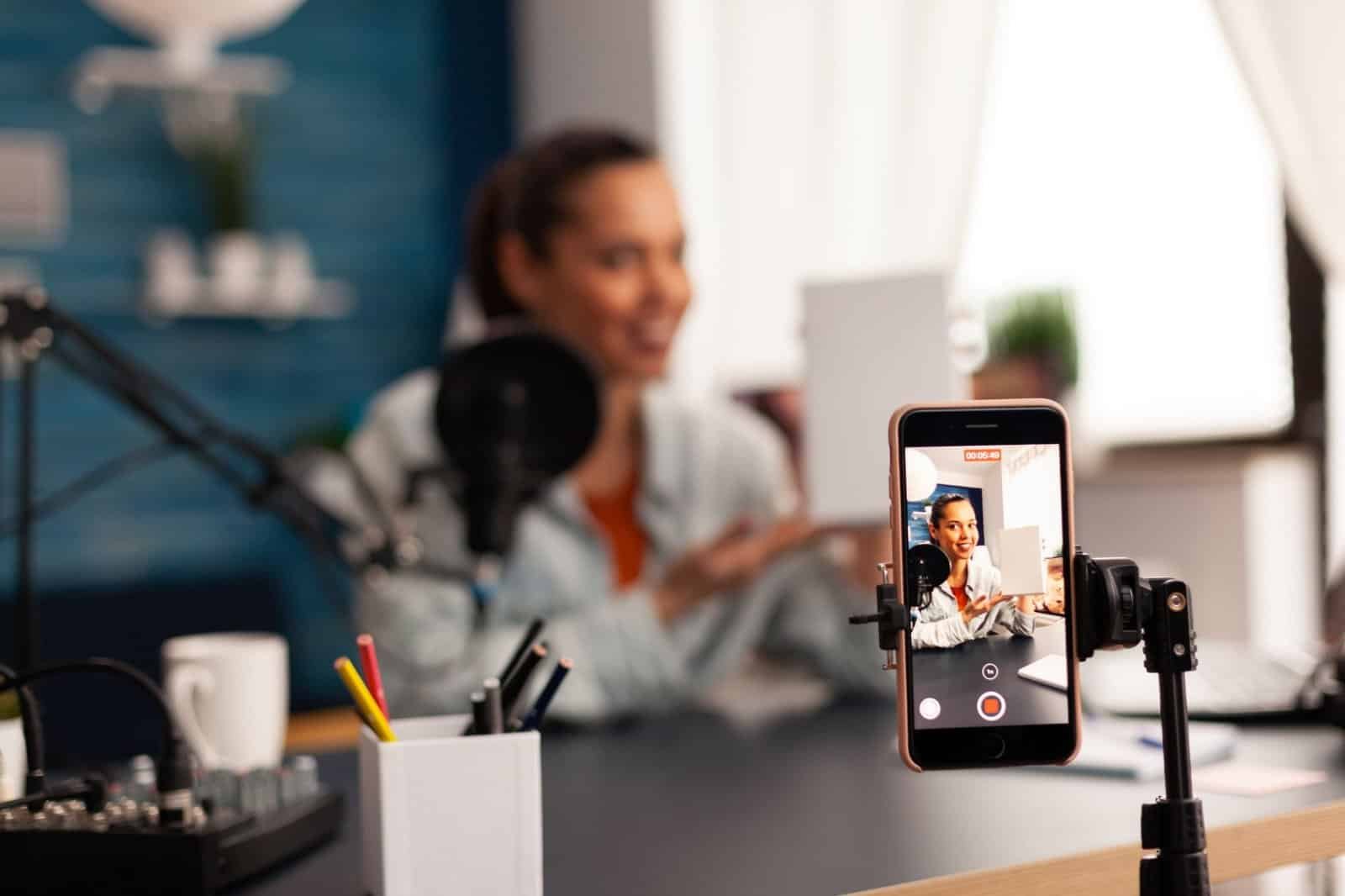Hey there…You might have noticed this if you’ve been using Instagram all these days. But it has been a wild ride seeing how Influencer marketing has taken over Instagram. If you come here, brands are not only posting regular stuff as themselves, but they are also leveraging the power of influencer marketing to grow their following and reach, that too at a rapid pace. A pretty ‘explosive’ growth, eh? Are you ready to unlock the power of Instagram influencer marketing and grow your brand? Well, I hope you’ve come here hoping to find out how to do so. That’s what this blog is about—the strategies to powering Instagram influencer marketing and growing your brand. Let’s begin. To navigate this dynamic landscape, it’s crucial to equip yourself with effective strategies and tools tailored for your brand’s unique needs. Utilizing instagram growth tools for success can significantly enhance your outreach and engagement, allowing you to connect with the right influencers for your target audience. With the right approach, you can harness this trend to elevate your brand visibility and foster meaningful customer relationships. To truly harness the potential of influencer marketing, it’s essential to focus not just on immediate gains but on building longterm Instagram engagement. Collaborating with influencers who resonate with your brand values can create authentic connections with your audience. By fostering these relationships, you can cultivate a loyal community that supports your brand over time.
The Power of Instagram Influencer Marketing
What started as a photo-sharing app is paving the way for Instagram to soon overtake Facebook as a major business platform. These are the technologies behind influencer marketing, which has taken the tech industry by storm recently. It involves third-party ‘influencers’, or online celebrities, who promote a product to their large, dedicated following. Instagram’s one billion users and visual-first nature provide unmatched access to highly captive audiences for any brand that can afford it. But why are influencers so powerful?
Why Influencers Matter
Because influencers hold the attention of their various subsets of interested customers, they’ve become a trusted source of communications. They’ve gained the trust of their community over years, created a whole lot of helpful, interesting content, and become a genuine connection to a specific subset of social media users, people who vibe with them, follow them, and appreciate what they consider credible. When that influencer talks about a particular product, it doesn’t feel like advertising, even if it is. There is trust involved, and the idea that influencer marketing might weaken that attempted manipulation is the biggest problem here. When influencers endorse products, they’re essentially considered agents of influence, sent to promote businesses through their own supposed authenticity—without the need for their community to question it.
Influencers offer social proof, which is one of the most powerful tools in marketing.
They offer you paths into micro-niches otherwise impossible to reach with normal advertising.
The authenticity and relatability of influencers translate into better engagement and conversion rates than standard ads.

Setting the Right Goals for Your Influencer Campaign
But first, you need to craft goals that are both measurable and actionable if you want to approach influencer marketing in a strategic way, rather than jumping right in, guns blazing.
Define Your Campaign Objectives
What’s the desired outcome of your influencer marketing campaign? It could be an increase in brand awareness, a spike in website traffic, more sales, building a community of like-minded individuals, driving engagement, or something entirely different. Defining the ultimate goals of your campaign will determine every single decision you make from that point forward.
Set SMART goals: Specific, Measurable, Achievable, Relevant, and Time-bound.
Align your influencer marketing strategy with your overall business goals.
KPIs (key performance indicators) such as engagement rates (likes, comments, shares, etc.), click-through rates and conversions can be used to evaluate success.
Finding the Right Influencers for Your Brand
It’s important to recognise that not all influencers are the same—finding the right ones can make or break your campaign. Ideally, you want to reach the right people with the right kind of message and get your product up to that group. Focus on influencers who share the same audience, style, and personal values as your brand.
Identify Your Ideal Influencer Profile
Audience Alignment: You should choose an influencer whose target audience are people you want to reach: people who are the same age, have the same interests, live in the same places, share the same hobbies and habits, and act in similar manners.
Engagement Rate: The number of likes and comments in relation to how many followers an influencer has. An influencer with 1,000 followers and 250 likes won’t be as beneficial to your campaign as one with 10,000 followers and 8,000 likes.
Contentstyle: The influencer’s contentstyle needs to fit with your brand’s visuals and tone of voice.
Platforms such as Influencity and BuzzSumo take much of the guesswork out of identifying the ideal influencer for your book, with options to filter by category, audience size, location, engagement scores and other metrics.
Crafting Compelling Campaigns That Convert
But after you’ve identified whom to target, it’s essential that you create another pivot: figure out how to make that campaign itch their audiences in a way that feels organic but delivers something of value. The most effective influencer marketing campaigns are able to combine all of these elements seamlessly, making it hard to distinguish them from genuine editorial content.
Collaborate on Creative Content
Engage them in the content creation process. As they’re arguably closer to the audience than you, their input can make your content more relevant.
Compose thumbnails that ‘co-create’ with the content, telling the story in a way that seamlessly showcases your product’s benefits.
Combine posts, stories, Reels and IGTV to get the most exposure.
Encourage influencers to share personal experiences or testimonials that make your product relatable.

Leveraging Influencer-Generated Content for Brand Growth
One of the most overlooked advantages of influencer marketing is influencer-generated content (IGC), which helps to instill trust with your influencer’s audience and can also be repurposed for use on your own marketing channels.
Repurpose IGC Across Platforms
Re-post influencer content from their profiles to make your brand’s Instagram seem more authentic and relatable.
Use IGC in your paid social campaigns, email marketing, and even on your website.
Incorporate influencer testimonials and videos into product pages to boost credibility and conversions.
Using Instagram Analytics to Measure Success
If you can’t measure it, you can’t manage it. You simply must track the analytics of your influencer marketing campaign to understand what is happening and where you need to make adjustments.
Key Metrics to Track
Engagement Rate: High engagement rates indicate that the content resonates with the audience.
Reach and Impressions: These metrics help you understand the scale of your campaign.
Conversion Rates: how many of the influencer’s followers are signing up to newsletters or purchasing products when they see the promotions.
You’ll get granular analytics about your prospects, such as performance data via tools like HypeAuditor or Traackr, which will allow you to base your decision on data rather than guesswork.
Scaling Your Influencer Campaigns for Maximum Impact
When you tap the winning formula, intensify your influencer marketing. Increase the number of influencers, increase the amount of content produced, and increase your geographic reach.
Optimize Your Influencer Relationships
Work with high performers on a long-term basis so you maintain the relationship and enhance the endorsement credibility with their audience.
Experiment with micro-influencers who, despite having smaller followings, often boast higher engagement rates.
Utilize influencer platforms like AspireIQ or Fohr to manage multiple collaborations efficiently.

Avoiding Common Pitfalls in Influencer Marketing
While influencer marketing can be incredibly lucrative, there are a lot of mistakes that individuals can make that can flop their campaign. This is why it can be so beneficial to keep these common pitfalls in mind and how not to let them derail your campaign.
Transparency and Authenticity Are Key
Disclose sponsored content to comply with advertising regulations and maintain audience trust.
Stay well away from influencers who have previously bought fake followers or posted lots of spam.
But you also shouldn’t work with influencers who don’t further your brand’s core values, no matter how well-known or followed they are.
Future Trends in Instagram Influencer Marketing
It’s tough to keep up with the rapid changes in the influencer marketing industry. Brands need to find ways to adapt to the many forms that these kinds of campaigns can take advantage of new technologies.
Embrace New Features and Technologies
Instagram Shopping: Use the Shopping feature to allow influencers to tag your product directly in the post so consumers can shop from there.
AR Filters and Effects: Work with influencers to create branded AR filters that the influencer can share with their audience so they can post their own interactions.
NFT collaborations: Team up with nft influencers for digital art and brand crossover experiences.
Conclusion
Instagram influencer marketing is an incredibly powerful strategy, but it works only if you do it right. From finding the right influencers to crafting the perfect campaign and measuring your success, it all comes down to keeping things real, creating a partnership that will build off one another, and keeping an eye on the metrics to keep your campaigns on track. Use these expert tactics and you’ll be on your way to unlocking the true power of influencer marketing to reach your brand’s growth goals. So what are you waiting for? Start building those influencer relationships already! Your brand will thank you for it! Additionally, consider integrating Instagram growth strategies for users into your approach, as these tactics can amplify your reach and engagement. By consistently leveraging data-driven insights and staying adaptive to trends, you can further enhance your influencer collaborations. Remember, the key to success lies in authenticity and the genuine connection that resonates with your audience.
FAQs
How do I find the right influencers for my brand? Use influencer discovery tools like BuzzSumo, Influencity or AspireIQ to filter influencers by category, engagement rate and audience demographics that align with your brand.
How much should I pay influencers? An influencer’s fee will vary based on follower count and engagement rate, along with the scope of a campaign. Micro-influencers can earn anywhere between $100 and $500 per post, whereas macro-influencers can command thousands. Check out influencer rate calculators for some help here.
How do I measure the success of my influencer campaign? Key metrics: Monitor engagement rates, reach, impressions and conversion. The key metrics we look for are engagement with your posts, your reach on such platforms, impressions (ie, the number of times your content is displayed), as well as the number of conversions. There are digital tools available that you can use to monitor your performance as well as make the necessary corrections to your strategy. You can make use of these tools to gather and study analytics on your brand/influencer. A few of such tools include Traackr, HypeAuditor and Onalytica.

